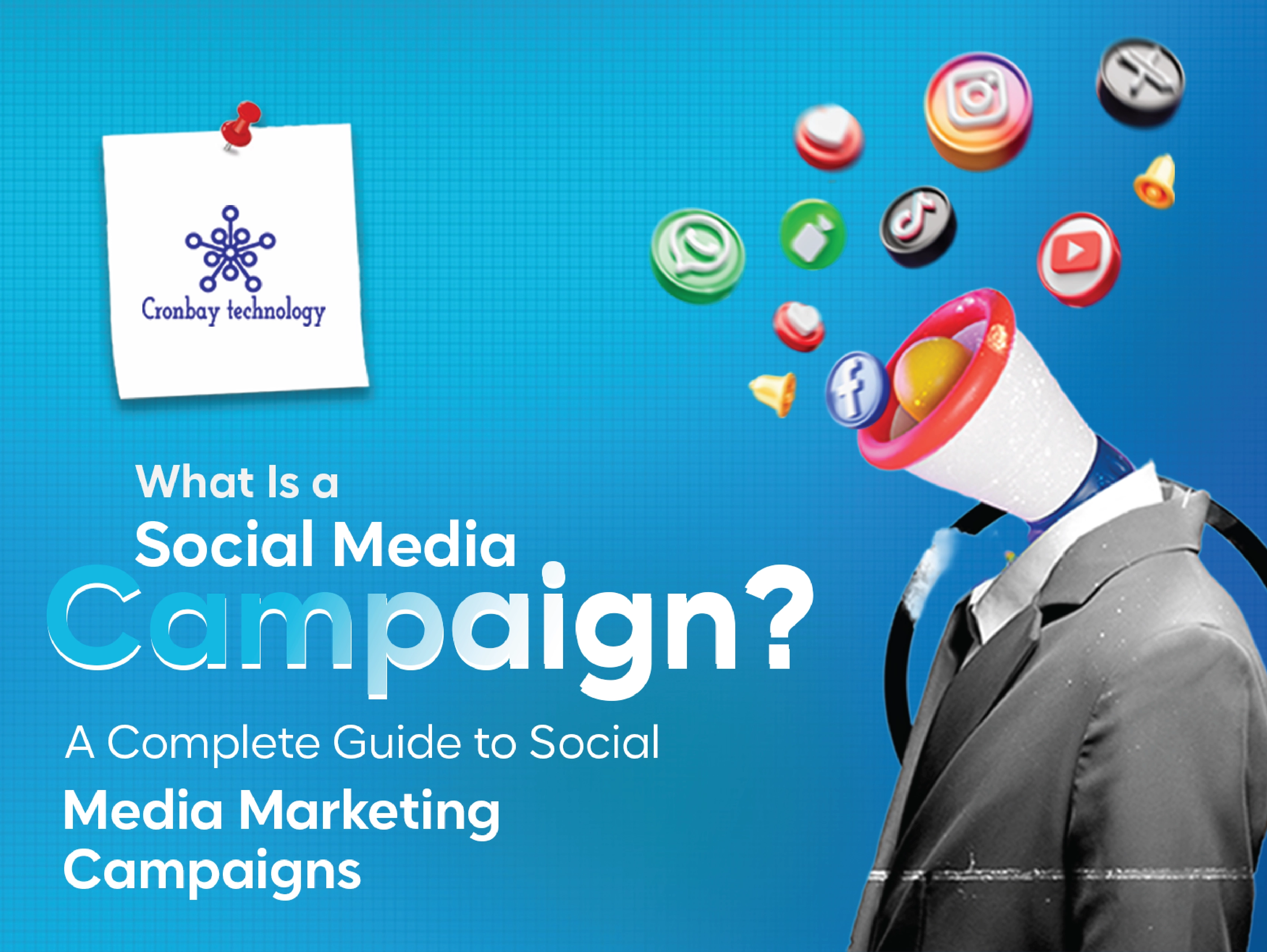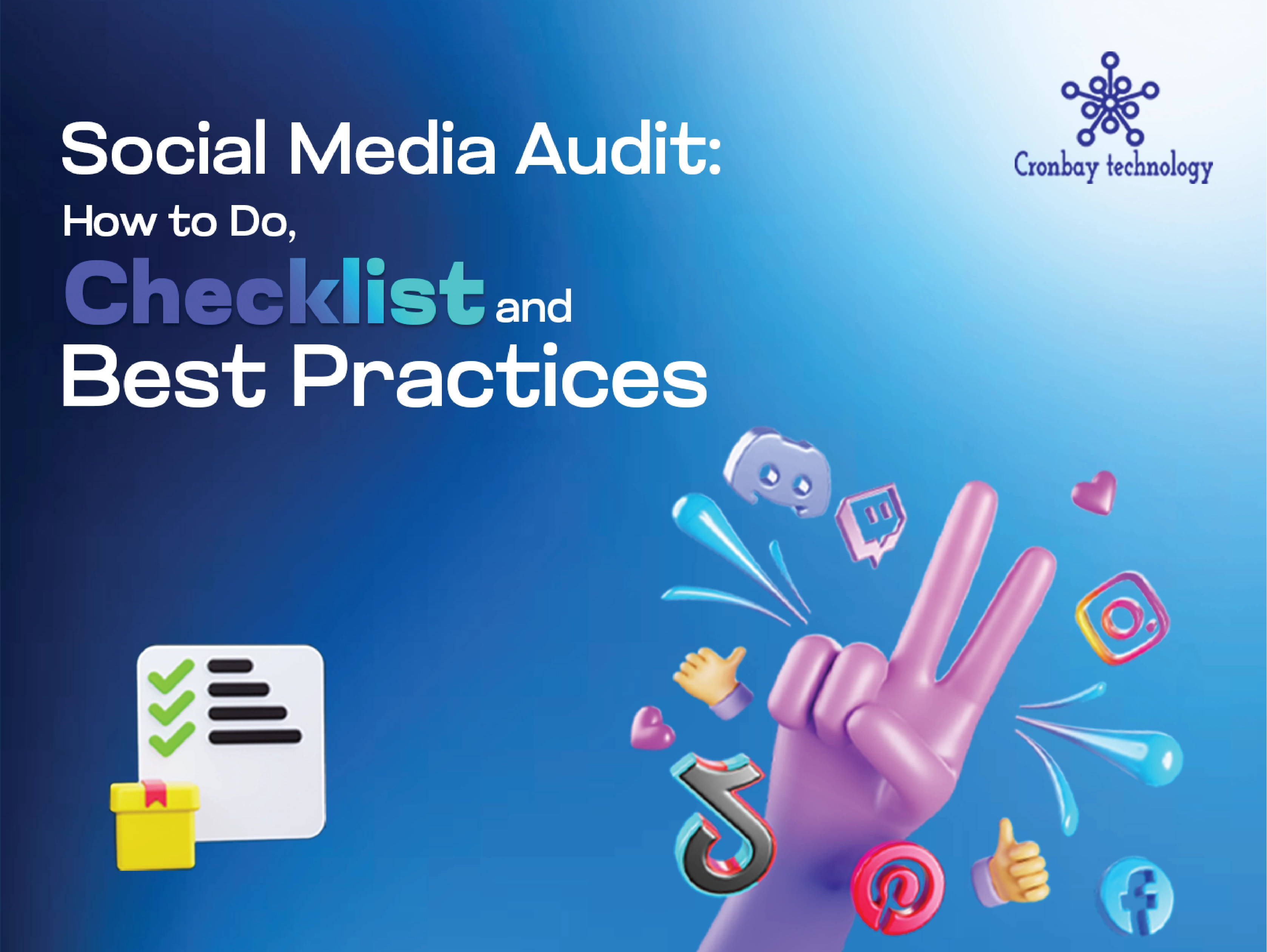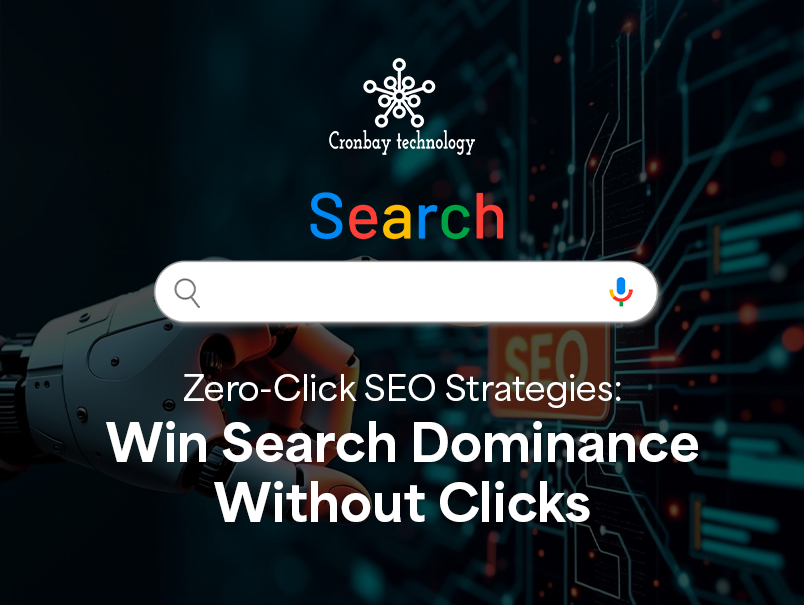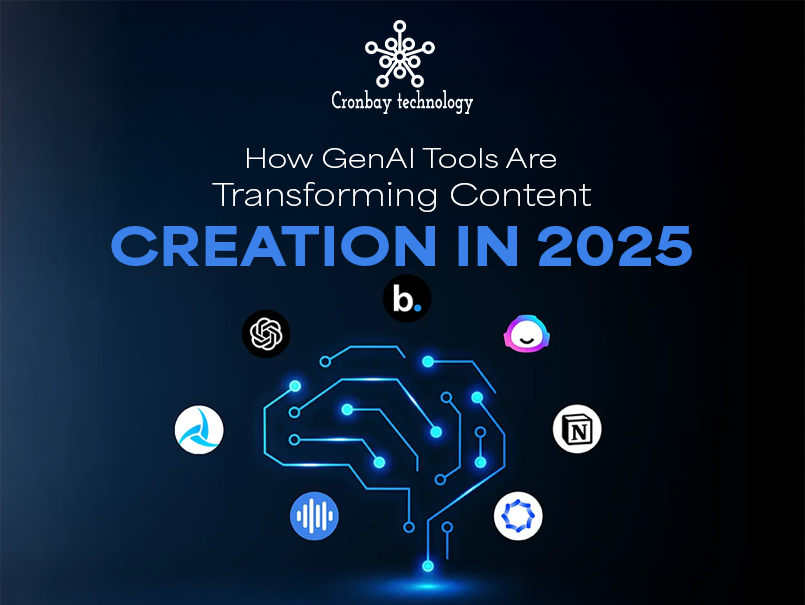Hello, fellow brand owners! Are you searching for a beginner’s guide to what is conversion rate optimization 2024? We get it. It’s frustrating when you’re pouring your entire time and money into your website, only to see minimal traffic. It is like hosting a grand event and realizing your guests aren’t having a great time.
We totally agree, when it comes to marketing your brand, it's normal to get overwhelmed by all the options. Moreover, if you’re new to the game, making the wrong choice can cost you in the long run. But don’t worry! We’ve put together an instant guide to help you make the right decision with confidence.
But don’t worry! Cronbay is here to simplify the process. In this quick CRO guide, we’ll walk you through key topics like funnel optimization, A/B testing, conversion tools, and proven tactics to boost your website conversion rate. So, let us dive into the basics and get your questions answered now!
What Is Conversion Rate?
Before you delve To be simple, a conversion rate is the percentage of visitors who complete a desired action on your website. For example, if all visitors convert, the rate is 100%. If only a quarter converts, it's 25%.
What Do You Mean by Conversion Rate Optimization?

Conversion rate optimization or CRO is the process of improving your website to increase the number of visitors who convert. This conversion optimization can include various actions, like:
- Purchasing a product
- Signing up for a trial
- Booking a demo
- Subscribing to a newsletter
- Creating an account
How Does Conversion Rate Optimization Differ From Funnel Optimization?
Do you also think conversion optimization and funnel optimization are the same? If yes, then let us tell you it is not the same. Below we have highlighted a few pointers that will give you a quick understanding of both the concepts.
| Aspect of Difference | Conversion Rate Optimization (CRO) | Funnel Optimization |
|---|---|---|
| Focus | Optimizing specific elements on a page to boost conversions | Improving the entire customer journey across all funnel stages |
| Scope | Optimizing specific elements for boosting conversions | Broad, covering multiple steps from awareness to action |
| Application | This applies to individual pages or sections, for example, the checkout page | Applies to the entire sales funnel example, lead generation to final sale |
| Goal | Increase the percentage of visitors converting to a specific page | Optimize the flow between different stages of the funnel to reduce friction |
| Tools/Methods Used | A/B testing, heatmaps, user behavior analysis | Lead nurturing strategies, customer journey mapping, retargeting |
| Time Frame | Often short-term, focused on immediate results | Long-term, involving continuous improvement across stages |
| Example | Changing the CTA button color to improve sign-ups | Streamlining the path from email marketing to final purchase |
What Is A Good Conversion Rate For A Website?
According to the Mailchimp findings, a good conversion rate generally falls between 2% and 5%, depending on the industry.
For example, some industries, like business services or electronics, tend to see higher rates, while others, like industrial equipment, have lower averages. So, make sure you're comparing within your field to get an accurate benchmark.
How To Calculate The Conversion Rate in 2024?

The process for calculating the conversion rate is quite easy. Just use the formula:
Leads Generated ÷ Website Traffic x 100 = Conversion Rate %
For example, if your e-commerce site had 75,000 visitors in September and sold 3,000 items:
= 3,000 ÷ 75,000 x 100
= 4%
This 4% is your conversion rate.
Top Benefits of Conversion Rate Optimization

Moving forward to the beginner's guide to conversion rate optimization 2024, let us learn the top benefits of implementing conversion rate.
1. Reduced Cost per Acquisition
The first benefit is the reduced Cost per Acquisition or CPA. With CRO, you can lower your CPA by driving more conversions without relying heavily on multiple marketing channels, especially paid ads.
2. Deeper Customer Insights
The second benefit is that it has deeper customer insights. CRO provides a better understanding of your audience by analyzing their behaviors and preferences, helping you know what drives them to take action.
3. Stay Ahead of Competitors
The third benefit is staying ahead of competitors. By infusing CRO into your website, you can outperform competitors, gaining an edge in the market.
4. Boosted Sales and Revenue
The fourth benefit is that it boosts sales and revenue. With more visitors converting, CRO helps increase your sales and ultimately drives more revenue for your business.
5. Enhanced User Experience:
The next benefit is the enhanced user experience. CRO often focuses on improving the user journey, making it easier and more enjoyable for visitors to navigate your website, leading to higher satisfaction and more conversions.
What Are The Common KPIs For Measuring CRO Success?

Some of the common KPIs for measuring CRO include:
1. Website Traffic
The first KPI is website traffic. This indicates how many visitors you have and where they come from.
2. Average Order Value or AOV
The second KPI is AOV. This shows the average spend per order, reflecting conversion effectiveness.
3. Average Time on Site or ATOS
The third KPI is ATOS. This measures how long visitors engage with your content.
4. Product Views/Interactions
The next KPI is product interaction. It identifies popular products and potential conversion rates.
5. Cart Abandonment Rate
The fifth KPI is the cart abandonment rate. This highlights why customers leave before completing purchases.
6. Cost per Acquisition or CPA
The sixth KPI is CPA. This measures the cost of acquiring a customer, assessing marketing ROI.
4 Quick Steps To Get Started With CRO

After learning the common KPIs, now is the time to start with the digital marketing CRO. Let us take a look at the steps.
1. Find Improvement Areas
The first step for website conversion is to identify where your website or landing page can be better. For this, analyze user data, conduct surveys, and use tools like heatmaps and session recordings to see how visitors interact with your site. This will help you understand their behavior and improve user experience, leading to more conversions.
2. Create a Hypothesis
After spotting areas for improvement, the next step is to form a hypothesis based on the data and feedback. A hypothesis is an educated guess about how a change could boost the conversion rate. For instance, you can think of making the checkout process easier to reduce abandoned carts.
3. Test Different Versions
Next, you need to test different versions of your page or elements to see which works best. For instance, in A/B testing, you show different versions to different groups of visitors to find out which one leads to more conversions. This gives you clear evidence of what changes are effective.
4. Review the Results
After the tests, the final step is to review the results. Here, you need to compare the conversion rates of the different versions to find out which changes had the biggest impact. This analysis helps you learn what your customers prefer and how well your changes are working.
Best Practices For Conversion Rate Optimization in 2024

Excited to work on conversion optimization for your website? That's great! But, be mindful before implementing the conversion rate. Below we have shared some top do's and don’t that are sure to skyrocket your website optimization game.
Recommended Actions
- Leverage Latest Technology: Utilize advanced digital marketing CRO tools to stay competitive and refine your conversion strategies.
- Measure Your Results: Ensure your optimized website has the right conversion tools to gather insights, which are crucial for effective decision-making.
- Collect Accurate Data: It allows you to promote your post on Instagram, increasing exposure and access to a larger audience.
- Understand Your Audience: Familiarize yourself with your target customers to tailor your website conversion strategies effectively.
- Experiment with New Ideas: Don’t hesitate to think outside the box; trying new approaches can lead to significant improvements in your conversion rate.
Common Pitfalls
- Avoid Excessive Changes: Don’t make too many changes for conversion optimization at once. Focus on one adjustment at a time to accurately assess its impact.
- Trust Your Instincts: While instincts are valuable, ensure it is backed by data analysis. This will lead to identifying and addressing issues effectively.
- Neglect Key Metrics: Keep essential business metrics in mind, like sales and profits, when adjusting your website conversion rate strategy.
- Make Hasty Decisions: Avoid rushing decisions. Collect data and allow time to analyze the effects of your changes for a better user experience.
Wrapping Up
In conclusion, conversion rate optimization is an essential strategy for maximizing the effectiveness of your website. By understanding the basics, employing effective strategies, and continually testing and refining your approach, you can significantly increase your conversion rates.
Ready to elevate your conversion rates and transform your website into a conversion powerhouse? Contact Cronbay today for expert guidance and tailored strategies. Let us unlock your brand's full potential together!
Frequently Asked Questions
1. What is conversion rate optimization in digital marketing?
Ans. Conversion rate optimization or CRO is the process of increasing the percentage of website visitors who take a desired action, such as making a purchase, signing up for a newsletter, or filling out a form.
2. How to improve website conversion rate step by step?
Ans. To improve website conversion rate, you need to first, identify key conversion goals, then, analyze user behavior, conduct A/B testing, enhance website design, thirdly, optimize content for mobile devices, and finally use prompt and clear calls-to-action or CTAs.
3. What are the best practices for conversion rate optimization in 2024?
Ans.Some of the best practices for conversion rate optimization in 2024 include personalizing user experiences, optimizing for mobile and voice search, enhancing page load speed, using AI-driven insights for audience segmentation, and providing seamless checkout experiences.
4. What are the benefits of CRO for small businesses?
Ans.Some of the popular benefits of CRO for small businesses include improved return on investment or ROI, better customer insights, enhanced user experience, more efficient marketing spending, higher revenue without needing additional traffic, and stronger brand credibility.
5. How to measure the conversion rate on a website?
Ans.Conversion rate is measured by dividing the number of conversions, for example, purchases or sign-ups by the total number of visitors, then multiplying by 100.
6. What are some of the tools for effective conversion rate optimization?
Ans.Some of the tools for effective conversion rate optimization include Google Analytics for tracking user behavior, Hotjar for heatmaps and session recordings, Optimizely and VWO for A/B testing, and HubSpot for marketing automation.
7. What is the difference between CRO and A/B testing?
Ans.CRO is a broader strategy aimed at improving overall conversion rates, while A/B testing is a specific method within CRO that compares two versions of a webpage or element to determine which performs better in driving conversions.
8. How to optimize landing pages for better conversion rates?
Ans.To optimize landing pages for better conversion rates ensure you have a clear, compelling headline, strong CTAs, minimal distractions, trust signals such as reviews or certifications, fast load times, and mobile-friendly websites.





